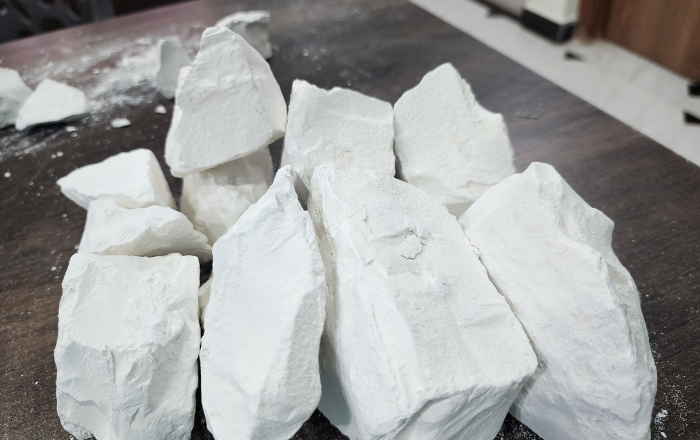
Reducing Cement Content with Kaolin in Concrete Production
Using kaolin as a supplementary cementitious material (SCM) is an effective strategy to reduce the overall cement content in concrete, thus lowering its carbon footprint. Here’s a detailed explanation of how this process works and its benefits:
Understanding the Role of Kaolin
Kaolin is a naturally occurring clay mineral primarily composed of kaolinite. When kaolin is calcined (heated to a specific temperature), it transforms into metakaolin, a highly reactive pozzolanic material. Pozzolans are materials that, when mixed with lime and water, form compounds possessing cementitious properties.
Mechanism of Action
- Calcination of Kaolin:
- Kaolin is subjected to high temperatures (around 600-800°C) to remove chemically bound water, resulting in the formation of metakaolin. This process increases the pozzolanic activity of the material.
- Pozzolanic Reaction:
- When metakaolin is added to the concrete mix, it reacts with calcium hydroxide (a byproduct of the hydration of Portland cement) to form additional calcium silicate hydrate (C-S-H), the primary binding phase in concrete.
- The chemical reaction is as follows: Metakaolin+Calcium Hydroxide+Water→Calcium Silicate Hydrate (C-S-H)\text{Metakaolin} + \text{Calcium Hydroxide} + \text{Water} \rightarrow \text{Calcium Silicate Hydrate (C-S-H)}Metakaolin+Calcium Hydroxide+Water→Calcium Silicate Hydrate (C-S-H)
- This reaction consumes calcium hydroxide, which is otherwise less beneficial in terms of strength and durability, and produces more C-S-H, enhancing the concrete’s overall performance.
Benefits of Using Kaolin to Reduce Cement Content
- Lower Carbon Footprint:
- Cement Production Emissions: The production of Portland cement is energy-intensive and releases a significant amount of CO2, primarily from the calcination of limestone (CaCO3) and the combustion of fossil fuels.
- Reducing Cement Usage: By replacing a portion of the cement with metakaolin, the total amount of cement required is reduced, directly decreasing the associated CO2 emissions.
- Sustainable Sourcing: Kaolin is abundant and can be sourced with relatively low environmental impact compared to limestone used for cement production.
- Improved Concrete Properties:
- Increased Strength: The pozzolanic reaction of metakaolin contributes to the formation of additional C-S-H, improving the compressive and flexural strength of the concrete.
- Enhanced Durability: Metakaolin improves the density and reduces the permeability of concrete, making it more resistant to chemical attacks, sulfate attack, and chloride ingress, which can cause reinforcement corrosion.
- Better Workability: Properly proportioned metakaolin can improve the workability of the concrete mix, making it easier to handle and place.
- Economic Advantages:
- Cost Reduction: While metakaolin can be more expensive than Portland cement on a per-ton basis, its use can lead to cost savings by enhancing concrete performance and longevity, reducing the need for repairs and maintenance.
- Material Efficiency: Utilizing industrial byproducts like metakaolin can contribute to more efficient use of resources and reduce waste.
Practical Considerations
-
- Proportioning: The optimal replacement level of cement with metakaolin typically ranges from 5% to 15% by weight, depending on the desired properties of the
- Mix Design Adjustments: Incorporating metakaolin may require adjustments in the mix design, such as changes in water content and the use of admixtures to ensure desired workability and setting times.
- Quality Control: Ensuring the consistent quality of metakaolin is crucial for achieving the expected performance benefits in concrete.
Conclusion
Using kaolin as a supplementary cementitious material in the form of metakaolin helps reduce the overall cement content in concrete, thereby lowering its carbon footprint. This approach not only enhances the sustainability of concrete but also improves its strength, durability, and workability. The adoption of metakaolin and other SCMs represents a significant step towards more eco-friendly and efficient construction practices.




